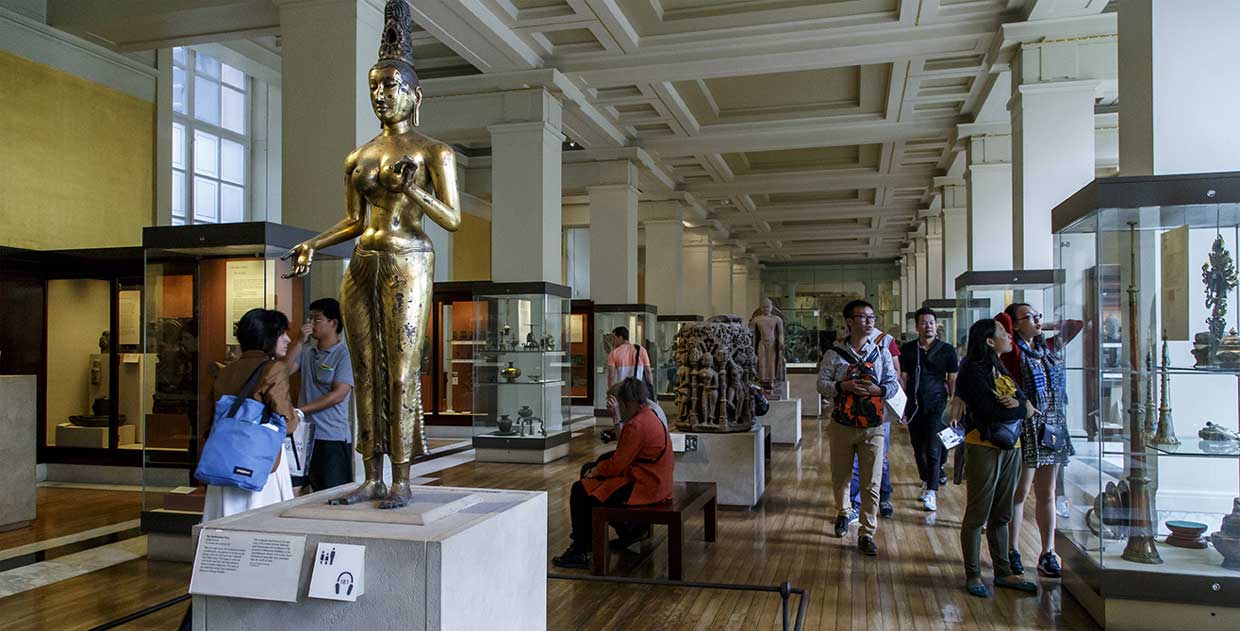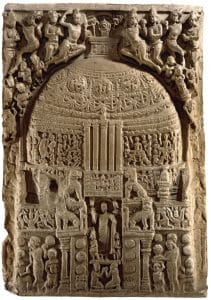Arts
British Museum Brings Alive Amaravati Sculpture on Smartphones

The British Museum.
Photo Credit: Bigstock
Explore the 2,000-year-old Buddhist shrine through British Museum’s interactive accessible through wifi.
The Great Shrine of Amaravati, one of the oldest and largest Buddhist monuments in ancient India, is coming alive at the British Museum on August 10. The exhibition will involve free interactive display about the monument’s creation and significance that viewers will be able to experience on their smartphones, taking them back to the time in history – 200 BC.
This is the first exhibition in any museum to include an interactive display controlled through a wifi link within the gallery, instead of a downloaded app, the Guardian reported, citing Daniel Pett, an expert at the museum on digital interpretation of archaeology.
The Sculpture
The exhibit, named by Conde Nast Traveller as one of the 21 London exhibitions you need to see this season, is a double-sided relief that was once a part of the monument at Amaravati in present day Andhra Pradesh. One side of the stone carving reveals what the Shrine may have looked like. It shows the dome carved with Buddhist symbols and stories, with the Buddha himself standing at the gate. The other side of the relief shows an empty throne, a Bodhi tree and a pair of footprints, implying perhaps that the Buddha has got liberation from the mortal world.

Limsetone sculpture from Amaravati at British Museum. Photo Credit: Trustees of the British Museum)
The Great Shrine of Amaravati, funded by pilgrims and created over several years, included a 120-metre long façade on a stone mountain. The donors include a perfumer, a monk, a disciple, and a group of women, according to the British museum website.
The Interactive Display
These donors will be reimagined by actors and projected onto walls during the display. The actors will play real patrons who have been identified through recently-translated inscriptions. They include perfume maker who donated a carved pillar in first century BC, a Buddhist monk and his sister who gave a lion-shaped support for a pillar a century later, and a woman who gave part of the carved railing that encircled the shrine, the Guardian reported. Visitors will be able to interact with them and explore the monument using the new mobile phone technology the museum is offering.
Amaravati Ruins
The Amaravati site was abandoned a few hundred years ago and fell into ruins, before surviving carvings were excavated in the 19th century. Over 120 carvings from the site are housed at the British Museum, forming the largest collection outside India. The sculptures are known as ‘Elliot Marbles’, after Sir Walter Elliot, who undertook their excavation in the 1840s, though they were made of limestone and not marble. They were transferred to the British Museum in 1880, according to an earlier report in the Hindu.
(Virtual pilgrimage: reimagining India’s Great Shrine of Amaravati is available on free display at British Museum from August 10 –October 8. The carved relief will be on permanent display in the new Asahi Shimbun Indian gallery in the museum from November 2017.)



